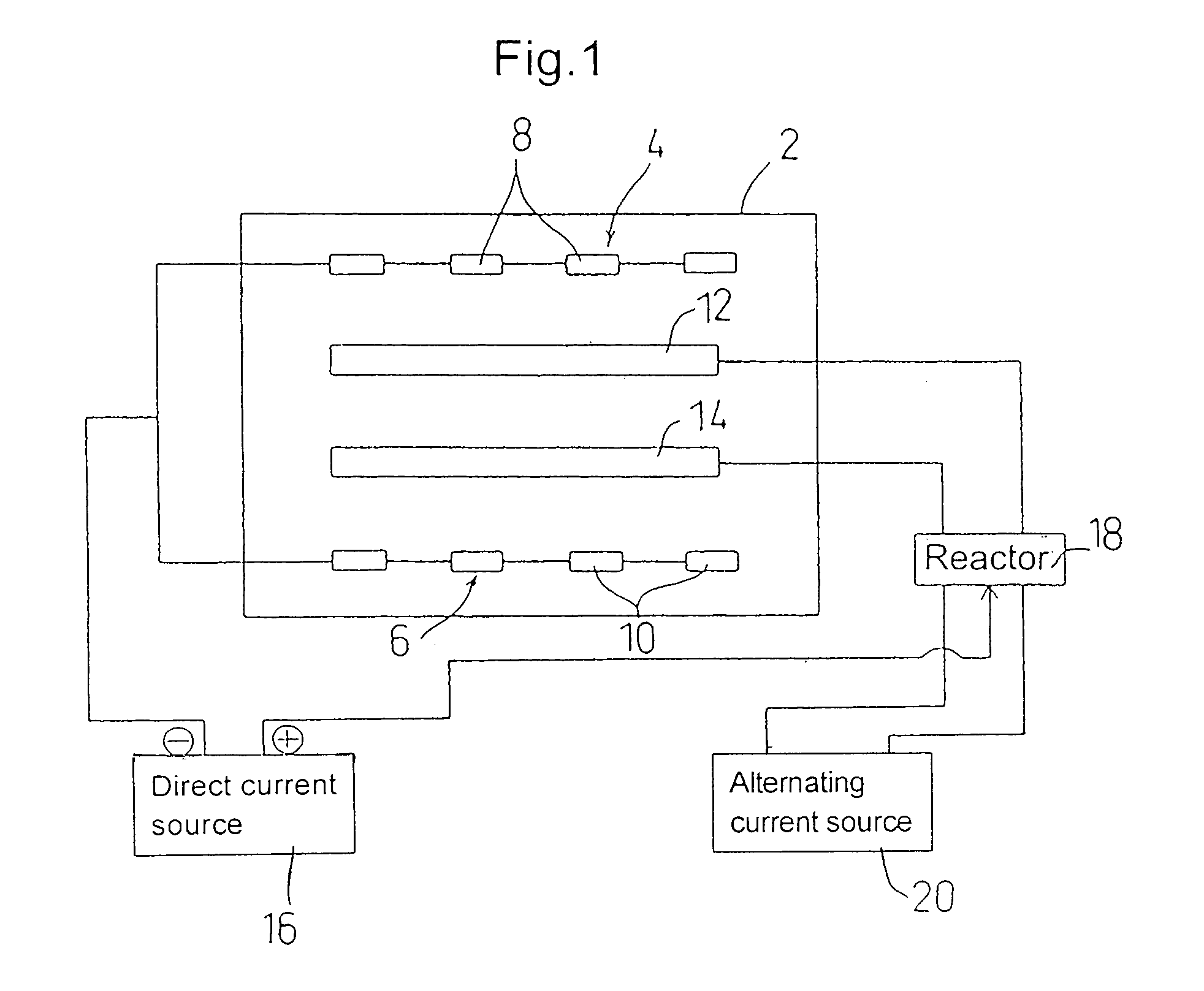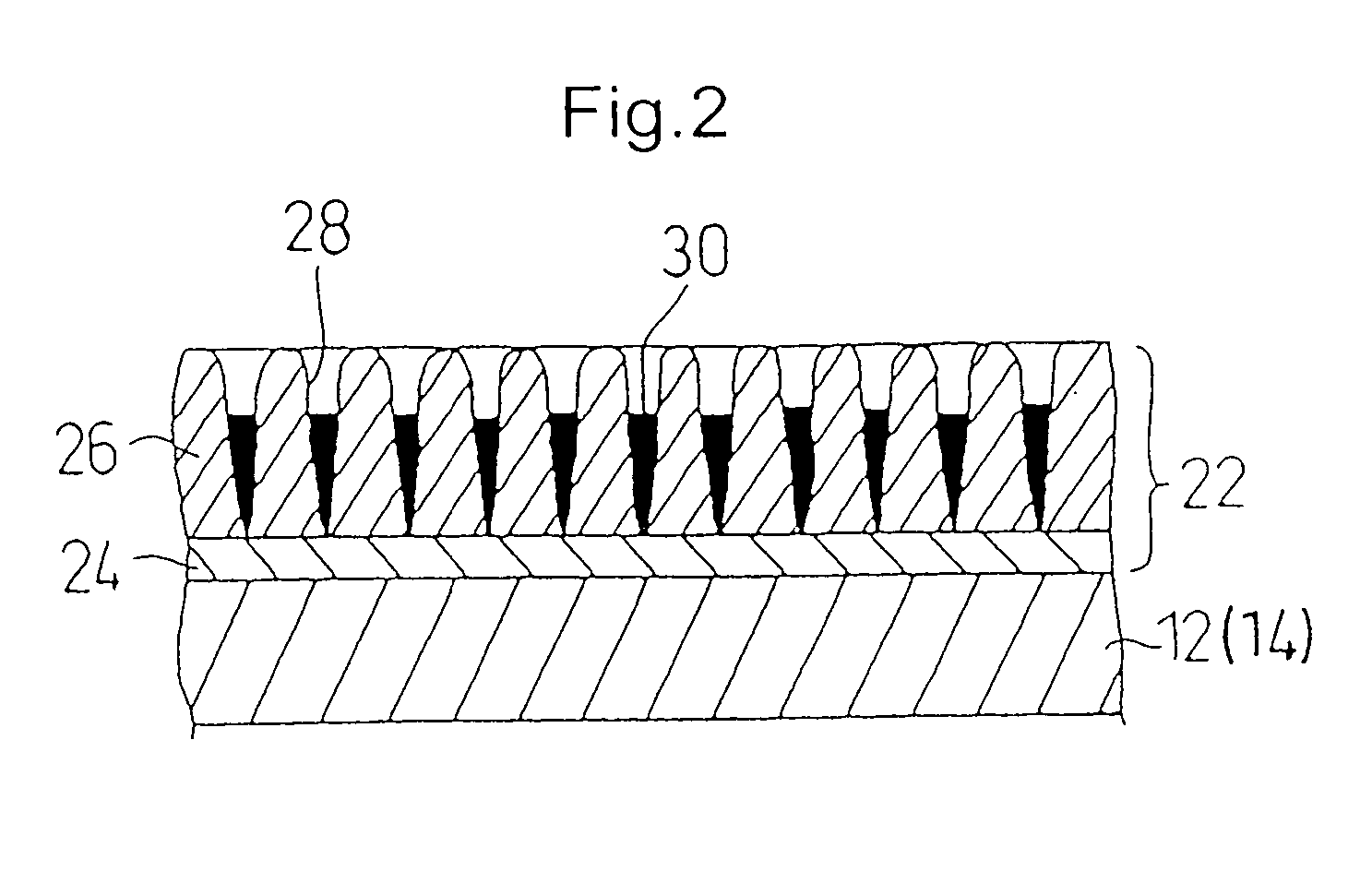Negative ion generating medium and its manufacturing method
a technology of generating medium and negative ions, applied in the direction of electrolysis, magnetic materials, surface reaction electrolysis coating, etc., can solve the problems of aging, negative ions may decrease, vital faults, and accelerated oxidizing corrosion,
- Summary
- Abstract
- Description
- Claims
- Application Information
AI Technical Summary
Benefits of technology
Problems solved by technology
Method used
Image
Examples
example 2
[0054]Example 2 of the electrolytic process was carried out with the treatment system shown in FIG. 1 using as the electrolyte liquid 100 g / l of sulfuric acid doped with 2 g / l of zirconium acetate in which a plate (100 mm long×50 mm wide×1 mm thick) of aluminum (A1050) as the mother material covered with an anodized layer of 10 μm thick was immersed. An alternating current was supplied between the plate to be treated and a carbon electrode. The current density was 1.0 A / dm2 and the temperature of the electrolyte liquid was 20° C. The electrolytic process was continued for 15 minutes. After the electrolytic process, the emission of negative ions from the anodized layer developed on the mother material was measured using the same negative ion meter as of Example 1.
example 3
[0055]Example 3 of the electrolytic process was carried out with the treatment system shown in FIG. 1 using an electrolyte bath of 50 g / l of phosphoric acid in which the same mother material as of Example 3 covered with an anodized layer of 20 μm thick was immersed as the anode with a carbon electrode as the cathode. While the temperature of the electrolyte bath was 25° C., a direct current was supplied for the electrolytic process at a density of 1.5 A / dm2. The electrolytic process was continued for 10 minutes. Then, the electrolytic process was repeated using 100 g / l of sulfuric acid doped with 10 g / l of zirconiumnitrate solution. After the electrolytic process, the emission of negative ions from the anodized layer developed on the mother material was measured using the same negative ion meter as of Example 1.
example 4
[0056]Example 4 of the electrolytic process was carried out with the treatment system shown in FIG. 1 using as an electrolyte liquid containing 2 g / l of silver sulfate and 10 g / l of zirconium oxychloride. The same mother material was used as of Example 1. After the electrolytic process conducted under the same conditions as of Example 1, the emission of negative ions from the anodized layer developed on the mother material was measured using the same negative ion meter as of Example 1.
PUM
| Property | Measurement | Unit |
|---|---|---|
| current density | aaaaa | aaaaa |
| temperature | aaaaa | aaaaa |
| temperature | aaaaa | aaaaa |
Abstract
Description
Claims
Application Information
 Login to View More
Login to View More - R&D
- Intellectual Property
- Life Sciences
- Materials
- Tech Scout
- Unparalleled Data Quality
- Higher Quality Content
- 60% Fewer Hallucinations
Browse by: Latest US Patents, China's latest patents, Technical Efficacy Thesaurus, Application Domain, Technology Topic, Popular Technical Reports.
© 2025 PatSnap. All rights reserved.Legal|Privacy policy|Modern Slavery Act Transparency Statement|Sitemap|About US| Contact US: help@patsnap.com



